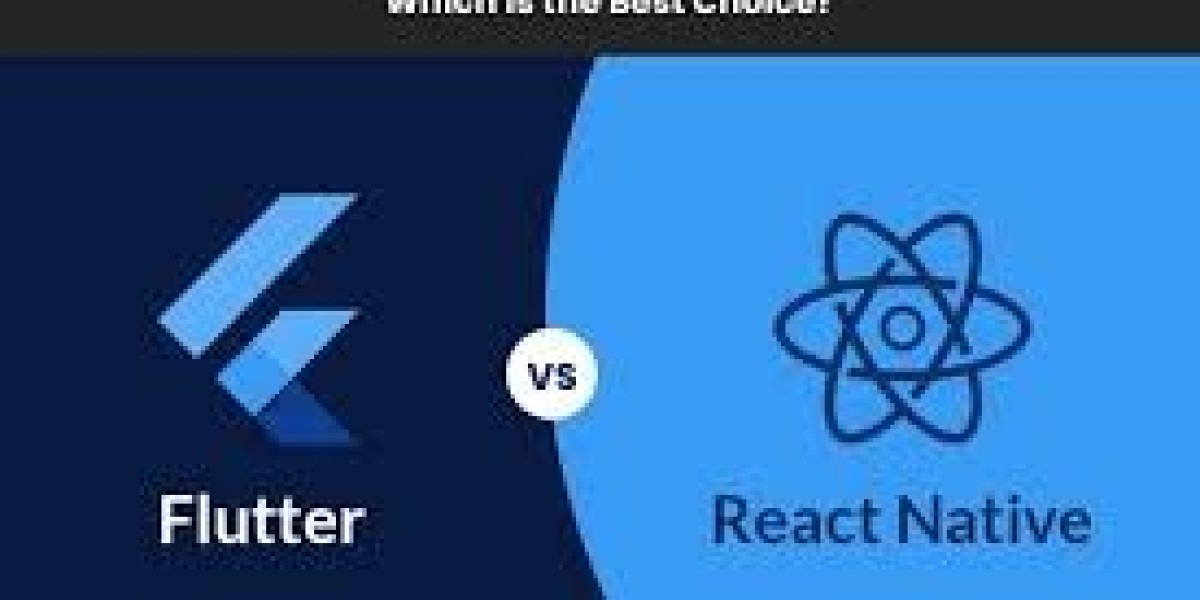Choosing the right framework for app development can make a huge difference in the quality and success of your final product. In today's competitive market, two popular frameworks often stand out: Flutter and React Native. Both have carved out significant niches in the tech world, offering unique features that cater to various development needs. With businesses constantly searching for solutions that are not only high-quality but also cost-effective and scalable, understanding what each framework brings to the table is more important than ever. This comparison aims to break down the strengths and weaknesses of Flutter and React Native, providing insights that will help you decide which framework is the best fit for your app development needs. From design capabilities to community support and everything in between, we'll cover all the bases to ensure you have a clear picture of what each framework offers. This way, you can make a choice that aligns perfectly with your business goals and technical requirements.

Getting to Know Flutter
Flutter, brought to you by Google, is an open-source toolkit that helps developers create apps for mobile, web, and desktop from a single codebase.
- One of Flutter's standout features is its use of widgets, allowing developers to build highly customizable user interfaces. This is a game-changer for businesses looking to create unique, eye-catching designs without a lot of extra effort.
- Another major advantage of Flutter is its "Hot Reload" feature. This nifty tool lets developers see the results of their changes almost instantly, without needing to restart the app. This can significantly speed up the development process, saving both time and money. Imagine being able to tweak your design on the fly and see the results immediately—it's like having a superpower for app development.
- Flutter's design capabilities are particularly impressive. It offers pre-made widgets that follow Google's Material Design principles and Apple's Cupertino style. This means you can create apps that not only look great but also function seamlessly across different platforms. Whether you're aiming for an Android or iOS look, Flutter has you covered.
- Additionally, Flutter uses the Dart programming language, which is known for its ease of learning and performance. Dart compiles into native code, which can result in smoother animations and faster app performance. This is particularly important for businesses aiming to create high-quality, user-friendly apps.
- The framework also includes a rich set of development tools, like a robust testing framework and comprehensive documentation, making it easier for developers to build and maintain apps. These tools can help ensure that your app is not only functional but also scalable and secure.
- For those exploring Flutter app development services in India, the growing community is another strong point. With more developers joining the Flutter bandwagon, there are plenty of resources, plugins, and support available. This can make a big difference when you're troubleshooting issues or looking for ways to add new features to your app.
- Flutter's growing community is another strong point. With more developers joining the Flutter bandwagon, there are plenty of resources, plugins, and support available. This can make a big difference when you're troubleshooting issues or looking for ways to add new features to your app.
- Overall, Flutter offers a compelling package for businesses looking to develop high-quality, visually appealing, and performance-driven apps. Its unique features and growing community support make it a strong contender in the app development world.
Delving into React Native
React Native, supported by Facebook, is a popular framework for building mobile apps using JavaScript and React. It stands out by allowing developers to use a single codebase to create applications for both iOS and Android, significantly streamlining the development process. This means less time and fewer resources are needed to get your app up and running on multiple platforms.
- One of React Native’s biggest strengths is its focus on native components. This approach ensures that the apps you build have a look and feel that closely matches native applications. Users often can’t tell the difference between a React Native app and one built with native code. This native-like performance is crucial for providing a seamless user experience.
- For businesses seeking a React Native development company in India, the framework boasts a vast ecosystem of community-driven libraries and plugins. This extensive library support can greatly speed up development. Instead of building functionalities from scratch, developers can leverage pre-built components to add features quickly and efficiently. For businesses, this means faster time-to-market and potentially lower development costs.
- Another significant advantage of React Native is its capability to integrate with existing native applications. If your business already has a native app and you want to add new features, React Native allows for smooth integration. This flexibility is particularly useful for businesses that want to enhance their existing apps without completely overhauling them.
- The framework uses JavaScript, one of the most popular programming languages. This makes it easier to find skilled developers, as many are already familiar with JavaScript and React. This can be a big plus for businesses looking to build a competent development team without extensive training.
- React Native also supports the "Hot Reload" feature, allowing developers to see changes in real-time. This makes the development process more interactive and efficient, helping teams quickly iterate on their designs and functionalities.
- Additionally, React Native benefits from strong community support. With a larger, more established user base, there are plenty of resources, tutorials, and forums available. This can be incredibly helpful when troubleshooting issues or looking for best practices.
Overall, React Native provides a robust framework for developing high-quality, performance-driven apps, making it a compelling choice for many businesses.
Capabilities in UI/UX Design
When it comes to UI/UX design components, both Flutter and React Native have their strengths. Flutter offers a rich set of pre-made widgets that can be customized to create intricate designs, allowing for a high degree of creativity in UI design. On the other hand, React Native utilizes native components, providing a more native look and feel to the applications. In terms of custom UI design, Flutter's flexibility in widget customization gives it an edge, while React Native benefits from a wide array of community-contributed libraries that simplify the design process.
- Flutter is particularly strong in creating visually appealing interfaces. Its widgets are versatile and can mimic both Android and iOS design languages seamlessly. This allows developers to craft unique designs that stand out. The ease of customizing these widgets means that businesses can achieve a distinctive look without much hassle. React Native, while not as flexible as Flutter in terms of design, ensures that apps maintain a native appearance. This is crucial for users who expect a consistent experience with other apps on their devices.
- The "Hot Reload" feature in Flutter enables developers to make changes and see the results instantly. This can be a significant advantage when fine-tuning UI elements to enhance user experience. React Native also offers a similar feature, though its implementation might sometimes be slower compared to Flutter’s immediate feedback. This difference can impact how quickly and efficiently a development team can iterate on UI designs.
- React Native’s community-driven approach results in a plethora of third-party libraries focused on UI/UX. This can be a double-edged sword; while it provides many options, the quality and maintenance of these libraries can vary. Developers need to carefully choose reliable libraries to ensure a smooth user experience. Flutter, with its comprehensive set of built-in widgets, offers a more controlled environment, which can be more reassuring for developers.
In terms of performance, both frameworks strive to offer smooth animations and quick load times. Flutter's use of Dart allows for faster rendering of animations, which can make the app feel more responsive. React Native, leveraging native components, ensures that the app integrates well with the device’s operating system, often resulting in a more polished user experience.
Struggling to find the right UI/UX balance for your app? Hire React Native developers in India with Hidden Brains to build intuitive, user-focused designs.
Speed and Performance
When it comes to speed and performance, both Flutter and React Native shine, but in different ways. Flutter compiles to native ARM code, ensuring top-notch performance and smooth animations. This direct compilation to native code eliminates the middleman, so to speak, resulting in faster execution times and a fluid user experience. For businesses, this means creating apps that feel swift and responsive, which can be a major selling point for users.
- React Native, on the other hand, leverages a bridge to communicate between JavaScript and native components. While this approach generally ensures that the app feels more like a native application, it can sometimes introduce slight delays, especially for complex animations or highly interactive elements. However, React Native's use of native components means the app integrates closely with the device's operating system, giving it a polished look and feel.
- One of the standout features in Flutter is its "Hot Reload" capability, which allows developers to see changes in real-time. This can drastically speed up the development process, making it easier to iterate on designs and fix bugs quickly. Imagine tweaking a button’s color or a layout’s alignment and seeing the results instantly—this can be a huge time-saver.
- React Native also offers a similar feature known as "Fast Refresh." While it provides a comparable experience, some developers find it slightly slower than Flutter’s implementation. Even so, this feature still helps in making the development process more interactive and less tedious.
- Another aspect to consider is the ecosystem. Flutter’s growing set of tools and plugins contributes to its speedy performance, while React Native benefits from its mature ecosystem of libraries and pre-built components. These resources can help speed up development, as developers don’t have to build everything from scratch.
Both frameworks offer robust performance metrics, but the choice often boils down to what’s more important for your project. If your focus is on creating highly responsive, animation-rich apps, Flutter might have the edge. If seamless integration with the device’s operating system is a priority, React Native’s approach might be more suitable.
Support and Community
Both Flutter and React Native offer robust community support, but their journeys and resources differ slightly. Flutter has been rapidly growing, attracting a diverse group of developers who contribute to its expansive library of plugins and tools. Google's backing ensures continuous updates and improvements, and its documentation is thorough, making it easier for new developers to get started.
- React Native, having been around longer, boasts a mature and extensive community. This means an abundance of libraries, tools, and forums where developers can find help. Facebook’s involvement ensures that the framework stays up-to-date with modern development trends. If you encounter an issue, chances are someone else has already faced it and a solution is just a search away.
- The support available for React Native is particularly notable. With countless tutorials, forums, and GitHub repositories, you’ll never feel like you’re alone in your development journey. Whether you’re looking to integrate a specific feature or troubleshoot a bug, the React Native community is there to assist.
- Flutter’s community, while younger, is incredibly enthusiastic and growing at a rapid pace. The wealth of widgets and plugins being developed means that you have a lot of resources at your disposal. The community is known for its friendliness and willingness to help newcomers, making it an inviting space for developers of all skill levels.
- One key difference is the sheer volume of available third-party libraries for React Native. With its longer history, React Native has accumulated a vast ecosystem that can significantly speed up development. However, this can be a double-edged sword, as the quality and maintenance of these libraries can vary. Developers need to be discerning in their choices to ensure stability and performance.
- On the other hand, Flutter’s plugins are often well-maintained and integrated seamlessly with its architecture. The official Flutter documentation also includes detailed guides and examples, which can be a lifesaver during the development process.
Both frameworks provide ample support and resources, but the more mature React Native community has a slight edge in terms of volume and variety. Flutter’s rapidly growing support base and comprehensive documentation, however, make it a strong contender.
Cost Effectiveness
When looking at cost effectiveness, both Flutter and React Native bring substantial savings by allowing developers to create cross-platform apps. This means you don't need separate teams for iOS and Android, which can cut down on development costs significantly.
- Flutter’s "Hot Reload" feature is a big time-saver. Developers can make changes and see results instantly, which speeds up the development process. Faster development times mean lower labor costs, and who doesn’t want to save money? Plus, Flutter's comprehensive set of widgets reduces the need for third-party tools, which can further keep expenses in check.
- On the other hand, React Native uses JavaScript, a language that's widely known and used. This makes it easier to find skilled developers without spending extra on training. For businesses already invested in JavaScript and React, adopting React Native can be a natural and cost-effective transition. Also, React Native’s vast array of community-driven libraries allows for quick implementation of features, which can lower development costs by reducing the need for custom solutions.
- However, it's not just about the initial development costs. Maintenance and updates are crucial aspects to consider. Flutter’s unified codebase for multiple platforms can simplify maintenance, as bug fixes and updates only need to be applied once. This streamlined process can translate into long-term cost savings.
- React Native also benefits from a unified codebase, but its reliance on native components can sometimes complicate maintenance. You might need specialized skills to handle platform-specific issues, which can drive up costs. However, its large community means that finding solutions or getting support can often be quicker and cheaper.
- Both frameworks offer cost advantages, but the best choice depends on your project’s specific needs. If you need a highly customized UI and quick development cycles, Flutter could be more economical. If your team is already familiar with JavaScript, or if you want robust community support and easy integration with existing systems, React Native might be the better financial bet.
In the end, both Flutter and React Native provide solid options for developing feature-rich apps without breaking the bank.
Want a visually appealing and responsive app but can't decide on the framework? Hire Flutter app developers in India to bring your ideas to life with expert UI/UX solutions.
Scalability and Security
When considering scalability and security, both Flutter and React Native bring unique strengths to the table. Flutter, using the Dart language, is designed with scalability in mind. Its architecture allows developers to easily add new features and scale up their applications without major overhauls. This makes Flutter an excellent choice for businesses anticipating growth and needing an app that can handle an increasing number of users and features seamlessly.
- On the security front, Flutter offers several built-in features to protect your app. From secure data storage to encrypted communication channels, Flutter has a solid foundation for developing secure applications. The framework's design helps minimize common security risks, making it a reliable choice for apps that handle sensitive data.
- React Native, supported by JavaScript, also offers good scalability. Its modular architecture makes it easy to manage and extend code, which is beneficial for growing applications. React Native's component-based structure allows developers to isolate and scale different parts of the app efficiently. This modularity is advantageous for businesses that plan to roll out updates or add new functionalities frequently.
- Security in React Native, while robust, often requires additional attention. The framework relies on third-party libraries for many of its security features. While this can provide flexibility, it also introduces potential vulnerabilities if these libraries are not well-maintained. Developers need to be diligent in choosing reputable libraries and regularly updating them to mitigate risks.
- Both frameworks support integration with various security tools and services, enhancing their security postures. For example, Flutter and React Native can integrate with backend services that offer additional security features like authentication, secure APIs, and more.
- In terms of community and support, both Flutter and React Native have active communities that frequently address security concerns. This means you'll have access to a wealth of resources and best practices to keep your app secure as it scales.
Choosing between Flutter and React Native for scalability and security will largely depend on your specific needs and resources. Both offer strong solutions, but the best choice will align with your project’s goals and the expertise of your development team.
Conclusion
Choosing between Flutter and React Native depends on your project needs and goals. Both frameworks shine in their own ways and offer valuable tools for app development. Flutter's customizable widgets and smooth animations make it ideal for creating visually appealing and unique interfaces. The "Hot Reload" feature also speeds up the development process, saving time and costs. React Native excels with its native component integration, making apps feel like they're built specifically for iOS or Android. This framework's large community and extensive library support make it easier to find solutions and add features quickly. Using JavaScript, a widely known language, further simplifies the development process and makes it easier to find skilled developers.
When considering cost-effectiveness, both frameworks allow for cross-platform development, reducing the need for separate teams for iOS and Android. This can lead to significant savings in both development and maintenance costs. Flutter’s unified codebase simplifies updates and bug fixes, while React Native’s component-based architecture allows for efficient scaling and extension. In terms of scalability and security, Flutter offers a solid foundation with built-in features and a design that minimizes common security risks. React Native’s modular structure is great for growing applications, but it requires careful selection of third-party libraries to ensure security.
Ultimately, the decision between Flutter and React Native will hinge on your specific project requirements, team expertise, and long-term vision. Both frameworks offer excellent opportunities to build high-quality, user-friendly applications that can help your business thrive in the competitive digital market.



